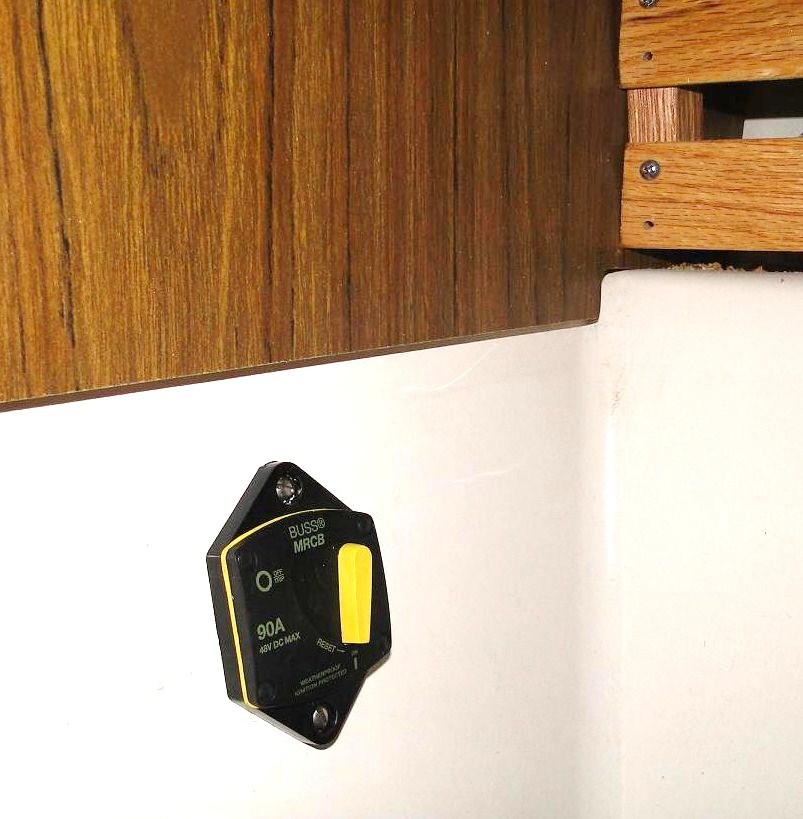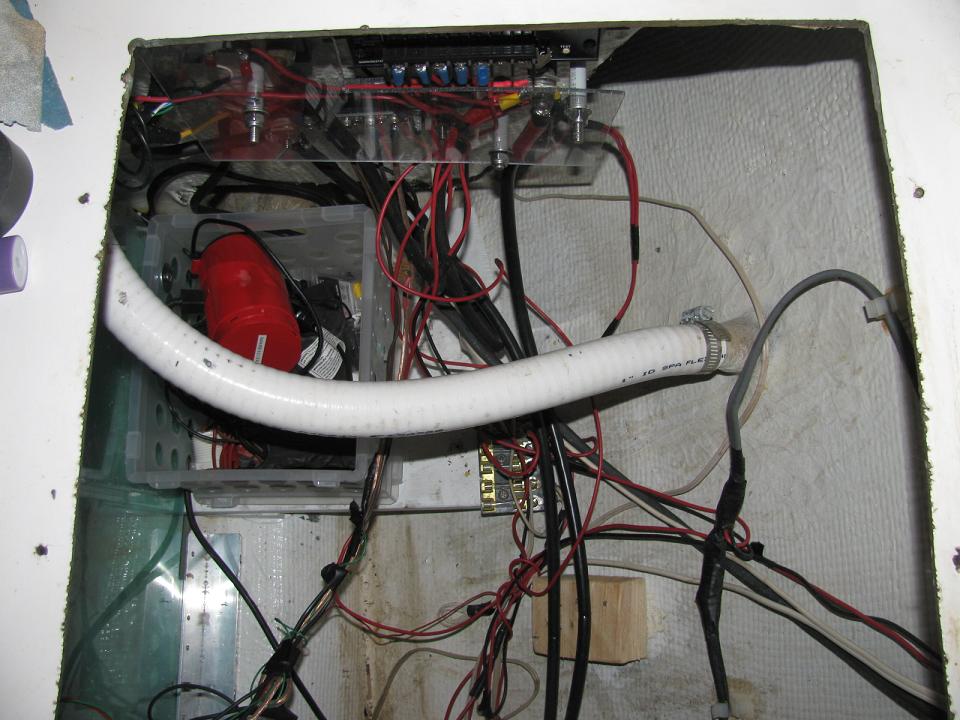
"Complicated" Excel file to calculate sailboat power requirements put together a bunch of years ago (you need Microsoft Excel on your computer to use this)
This is a low to medium power system for a sailboat intended to be used up to a week or two. This boat does not have an electric fridge as this dramatically increases the electrical requirements. The boat has all 12 volt LED interior lights. The car stereo with four bookshelf speakers is used often as well as a lap top computer run from a 175 watt inverter for an hour sometimes two each day. A relatively low power GPS/fish finder/chart plotter is often on all day long and VHF radio is often on (listen only). An LED anchor light is used at night on the hook. We might watch a movie on a portable DVD player (audio sometimes through the car stereo) every other night.
I have approximately 200 amp hours of total battery capacity. For up to just under a week, I can get by with just the 10 watt solar panel and the 80 watt outboard alternator. The 40 watt panel is removable for shorter mostly few day sailing trips and gives a total of 50 watts solar. When I have had the full 50 watts of solar on the boat and using the electrical in a comfortable manner, I can barely get the power deficit below 30 amp hours (about 15% of my battery capacity) on a week long trip. Keep in mind there are two ways to get by for a week or two. One is a lot of battery capacity - just recharge when you get home. Or you can have lots charging ability such as solar and go with less battery capacity and recharge on a daily basis. Most people end up with something in between. Since I can only get my battery down to about 15% to 20% below full with normal use, the system I have has a fair amount of margin. No margin would be ending up after a week with only 50% of battery capacity.
This boat has a single 12 volt battery composed of two six volt batteries in series. I have a Xantrex Linklite battery monitor on this single battery which reads voltage, current and "integrated current" or amp hours. I much prefer a single battery that I know exactly what its doing (provided by the "amp hour" feature of the battery monitor which is always keeping track of total current in or out of the battery) over two batteries and a battery switch.. Just a personal preference. I've been happy with the Linklite and another brand of battery monitor to consider is Victron. I think having the battery monitor and knowing exactly the net charge in or out of the battery allows you to get by with both less battery and less charging sources. The single large battery is not backed up with a second large battery. However, outboard starting is backed up manually and I have hand held VHF radio, hand held GPS and cell phone, all with internal batteries that I can charge from the boat.
You can make a "single large" battery from either two six volt batteries in series or two twelve volt batteries in parallel. I used to have two 12 volt batteries in parallel and had them carefully wired to make sure charge flow was balanced but was not good about maintaining the water in the batteries and always had one battery using a lot more water than the other. I think what happens is a run away situation where once one battery has some plate exposed because of low water, the water loss in this battery is accelerated. When I had the two 12 volt batteries always connected in parallel, I would often have one battery use a LOT of water and the second battery use almost no water. With the two six volt batteries in series, both the charging current and the usage current is identical. For three years now, I have not had the issue of dramatically different water usage between the batteries.
I have three sources to charge the battery. These sources are the outboard motor (2010 Nissan 9.8 - 80 watts), the solar panel and the 5 amp battery maintainer. All three of these sources are always hooked up and charge can come from one at a time or all three at the same time. All three sources will regulate charging independently and never need to be disconnected.

The picture below is of the very important 90 amp breaker/ fuse shown in the diagram above. I have a run of four gauge wire from the batteries in the front of the boat to the outboard in the rear and those two golf cart batteries could cause those four gauge wires to melt and burn the boat down if there was a short. The 90 amp fuse keeps this from happening and this fuse should be placed as close to the batteries as possible.
In general, fuses protect the wire from burning up. In an electrical distribution, this means that anytime the wire gauge is changed from larger to smaller, a fuse should be added in the line. For example, on my boat, the four gauge wire run is protected by the 90 amp fuse. Under the sink, there is another break out of smaller gauge wires to devices such as radio's, lights ext. Since the wire gauge was changed, all of these new wire runs must be fused since a short on these new runs could burn up the smaller wire but not trip the 90 amp fuse. To size fuses to wire gauge, google something like "wire gauge calculator".
FYI, I used the 90 amp breaker as it will protect the four gauge wire. However, the outboard electric start normally uses about 30 to 45 amps so the 90 amp breaker wont falsely blow (and I've never had it blow).

The solar charge controller used is the Morningstar Sunlight 10 amp (PWM type) http://www.morningstarcorp.com/Sun-Light This solar charge controller has an output that I used to turn on an anchor light every night when I had the boat on a mooring. The charge controller uses the panel to tell when its dark and has a variety of different settings on how the output gets turned on.
Below - all the electrical "mess" is under the sink on the starboard side. There is a Lexan Plexiglas divider to keep stuff stored under the sink from getting into the electrical area. I like this area because it gives me a lot of room to work if I have to try and debug some problem or add a new circuit. One day I may even get around to straightening this wiring mess up..

Below: Two six volt batteries are under the V berth. I cut the access in the picture to make maintaining battery water easier. Note that the V berth location was partly picked as a way to balance the weight of the outboard on the other end of the boat and it also adds weight to the trailer tongue when towing.

Below: This is the breakout box for the outboard located in the aft Laz area. I put an extra high current switch here partly so that I could make sure I had cut off power to the breakout box before removing the outboard wires - plus I wanted to be able to remove the outboard from the electrical system from the back of the boat if I ever needed to do that in a hurry. I can still shut off the entire electrical system from the 90 amp beaker but this loses the stereo presets (now I'm whining)...
